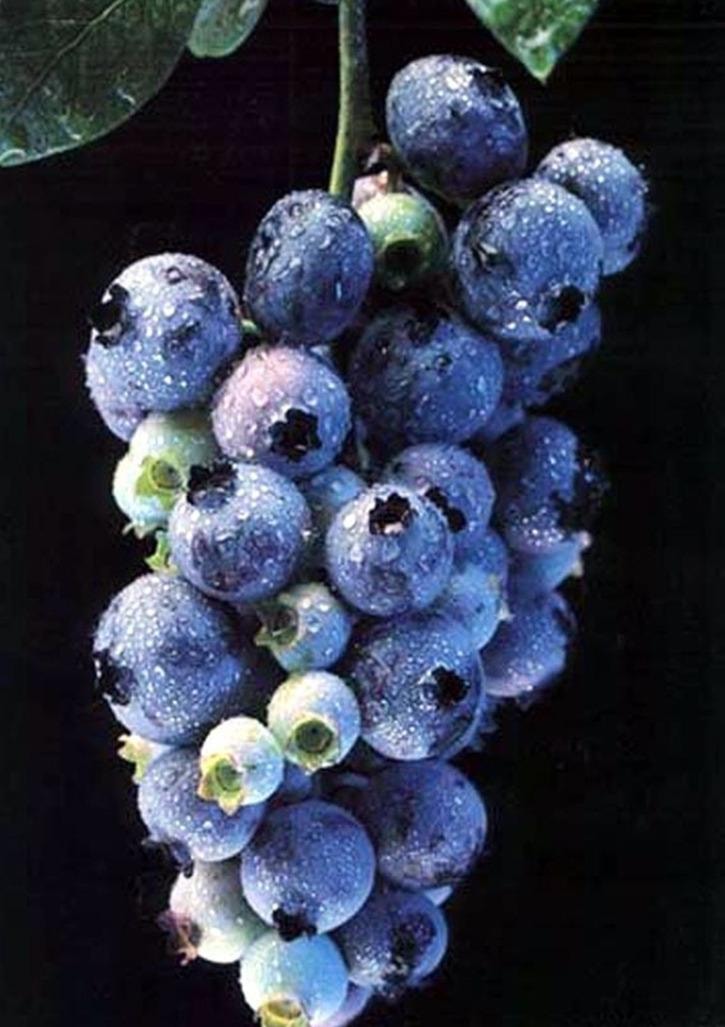If you love blueberries for their wonderful flavour, eat lots and keep eating them because they are one of the best natural health foods we have.
At the United States Department of Agriculture (USDA) Human Nutrition Center, it has been determined that when compared to 40 other fresh fruits and vegetables, blueberries are number one in antioxidant activity. In other words, they help neutralize harmful by-products of metabolism called free radicals which can lead to cancer and many age-related diseases.
Anthocyanin, the pigment that creates the blue colour in blueberries, is primarily responsible for the major health benefits. But there’s more.
Researchers at Rutgers University in New Jersey have found a compound in blueberries that promotes urinary tract health and reduces the risk of infection. European and Japanese scientists have documented the relationship between anthocyanin and improved eyesight and the easing of eye fatigue. The American Chemical Society has released information about a substance in blueberries, called pterostilbene, which has the potential to lower cholesterol. Further USDA research has also found that various compounds in vacciniums are helpful in reducing obesity and heart disease.
There is a great deal of research now taking place on the many health benefits of blueberries, but if you eat about a cup a day, you just might be the beneficiary of all kinds of good stuff.
Blueberry plants are now available in stores and they are one of the easiest plants to grow in a home garden. In spite of all you've heard about pollination, blueberries are technically self-fertile. Production, however, is far better if two or more different varieties are planted.
To say blueberries love acidic soil is an understatement. It is also important to choose a location that is rich in organic matter, but be careful to avoid manures.
There are genetic dwarf, low bush and high bush varieties of blueberry plants, so they can fit into almost any garden area. Don’t hesitate to blend them in with other acid-loving broad-leaved plants such as rhododendrons, Pieris japonica or Viburnum tinus. Treat your blueberry plants more as ornamentals rather than small fruits, and use them as part of your landscaping. One plant by itself looks out of place, but a grouping of three or five, placed close together, blends nicely into any planting.
For a real novelty, try a true dwarf variety called Top Hat. This compact strain seldom grows over 18 inches high and is well suited to bonsai pots. Granted, its flavour is not quite the same as some of the commercial varieties, but its fruit still tastes good on cereal or over ice cream. A more flavourful low variety is the cute little Brunswick that only grows six to eight inches high and two feet wide and is quite at home planted in a bed of heathers or dwarf conifers.
Most blueberry varieties fall into early, mid or late season classifications. With our ideal growing area, I recommend planting one of each type to prolong the harvest period. Now you can stretch the season ever further by planting the extra early variety called ‘Elliot’ and the extra late one called Spartan. If you’re hung up on really big berries, then the largest in the world are the Darrow and Chandler. Both have great flavour.
Birds are the main pest affecting blueberries in the home garden, and netting is really the only solution.
Now is a great time to plant blueberries. They are one of the very best health foods in the world.
Brian Minter is a master gardener who operates Minter Gardens in Chilliwack.
